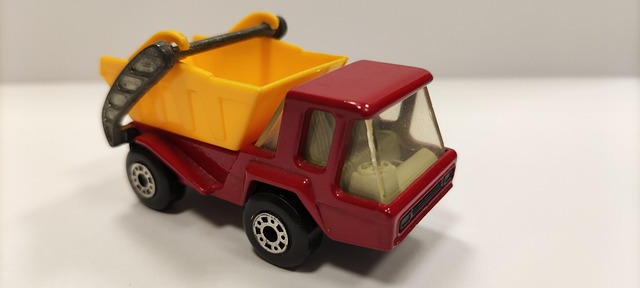Looking to register your car in California? This comprehensive guide walks you through every step, from understanding eligibility requirements for car registration in California to completing the DMV vin verification process. We’ll also cover preparing your vehicle for inspection and title transfer, as well as post-registration tasks like insurance and tags. Get ready to navigate this crucial process smoothly and legally.
- Understand Eligibility Requirements for Car Registration in California
- Gather Necessary Documents for DMV Vin Verification
- Prepare Your Vehicle for Inspection and Title Transfer
- Complete the DMV Registration Process Step-by-Step
- Post-Registration Steps: Insurance, Tags, and Other Considerations
Understand Eligibility Requirements for Car Registration in California

Before registering your car in California, it’s crucial to understand the eligibility requirements set by the Department of Motor Vehicles (DMV). One key step is ensuring your vehicle meets all safety and emission standards. This includes a valid and accurate Vehicle Identification Number (VIN) verification, which can be conducted through a mobile vin verifier or mobile vin inspection service, making the process more convenient for California residents.
The DMV requires that vehicles must have a current registration from another state, a valid smog certificate, and proof of insurance. Additionally, all necessary documents, such as the title and any lien information, should be presented. A mobile vin verification can help ensure your vehicle’s history is accurate and free from any discrepancies, streamlining the registration process at a local California DMV office.
Gather Necessary Documents for DMV Vin Verification

Before you can register your car in California, you’ll need to undergo a crucial step known as DMV VIN verification. This process involves providing detailed documentation that proves the vehicle’s identity and history. Start by gathering essential documents, such as the vehicle registration certificate from the previous state of residence, a valid driver’s license, proof of insurance, and the vehicle’s title. Additionally, you’ll require a complete and accurate Vehicle Identification Number (VIN) report, which can be obtained through various means, including mobile VIN verification services.
These mobile VIN verifier applications offer a convenient and efficient way to gather crucial information about your car’s history. By using these tools, you can easily access detailed vehicle reports, including past owners, maintenance records, and any accidents or damage the car might have sustained. Having all these documents ready ensures a smoother process during your DMV visit for car registration.
Prepare Your Vehicle for Inspection and Title Transfer

Before heading to the DMV for registration, ensure your vehicle is ready by completing a thorough preparation process. This includes obtaining all necessary documents, such as the title and proof of insurance, and ensuring your vehicle passes the required emissions and safety inspections. One crucial step is to undergo a DMV VIN verification process, which involves checking the Vehicle Identification Number (VIN) to confirm the vehicle’s authenticity and history.
Additionally, consider opting for a mobile VIN inspection or vin inspection service to save time and hassle. These services allow you to verify your VIN remotely, ensuring any potential issues are identified before you visit the DMV. By completing these preparations, you’ll streamline the registration process, making it faster and less stressful.
Complete the DMV Registration Process Step-by-Step

Registering a car in California involves a straightforward process that can be completed at any DMV (Department of Motor Vehicles) office or online. Here’s a step-by-step guide to help you navigate the procedure efficiently. Firstly, gather all required documents, including your vehicle’s registration papers, proof of insurance, and identification. One crucial aspect is the DMV VIN verification, which ensures that your car matches the details on record. This can be done by providing your Vehicle Identification Number (VIN) during the registration process.
For a smoother experience, consider using a mobile vin inspection service, especially if you’re short on time or have accessibility issues. These services offer convenience by conducting the vin inspection at your location, whether it’s at home or work. Alternatively, many mobile vin verifier apps are available that allow you to quickly and easily verify your vehicle’s information. Following these steps will ensure a successful car registration in California without any delays.
Post-Registration Steps: Insurance, Tags, and Other Considerations

After successfully registering your vehicle with the DMV, there are several essential post-registration steps to complete. One of the most crucial is obtaining insurance, as it’s both a legal requirement and protects your investment. Ensure you have the appropriate coverage according to California’s minimum liability limits.
Additionally, you’ll need to acquire license plates (tags) from the DMV. These tags are not just for identification; they’re also a visible sign of your vehicle’s registration status. Keep in mind that certain considerations may apply depending on your vehicle’s make and model. For example, some vehicles may require specific emissions tests or have unique requirements related to their age. Always verify these through a DMV vin verification or consult with a specialist if you’re unsure, even for a mobile vin inspection.
Registering a car in California involves several crucial steps, from ensuring eligibility to completing the DMV vin verification process. By gathering all necessary documents, preparing your vehicle for inspection and title transfer, and meticulously following the registration procedure, you can navigate this essential task smoothly. Remember that post-registration, considerations like insurance, tags, and other legal requirements must be addressed promptly. With these steps in mind, you’ll be well on your way to ensuring your vehicle’s compliance with California’s regulations.
